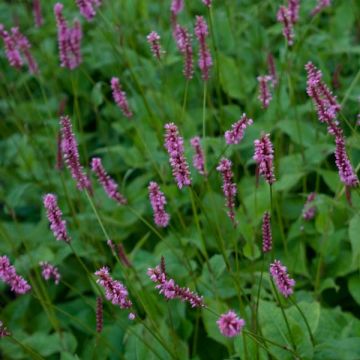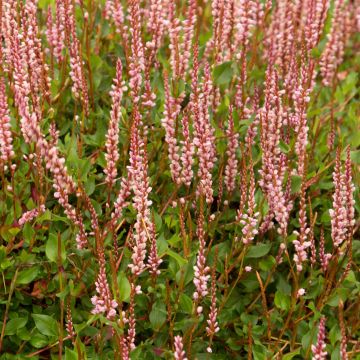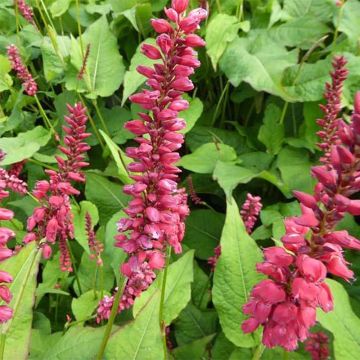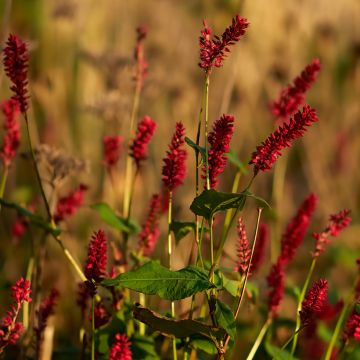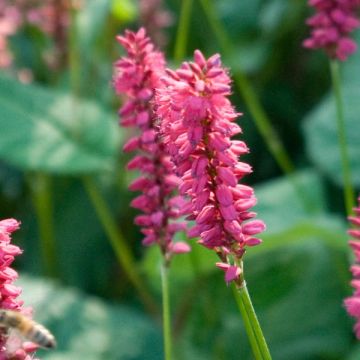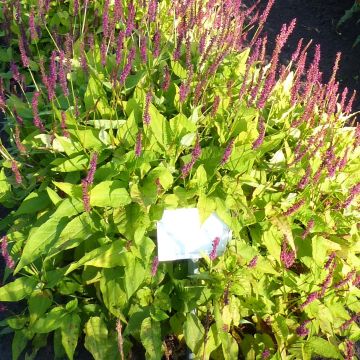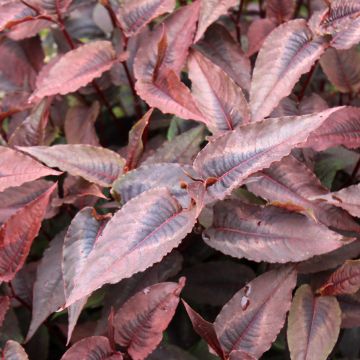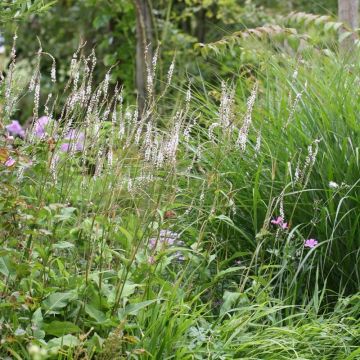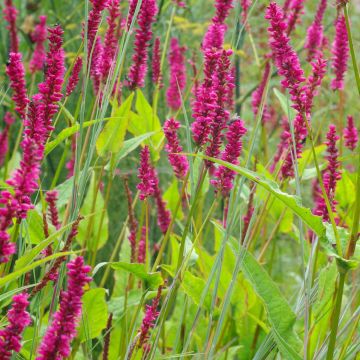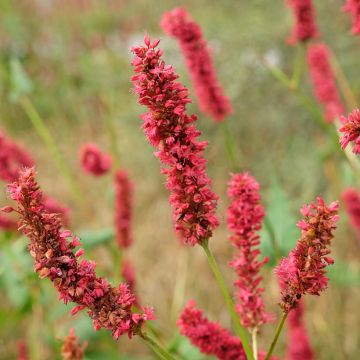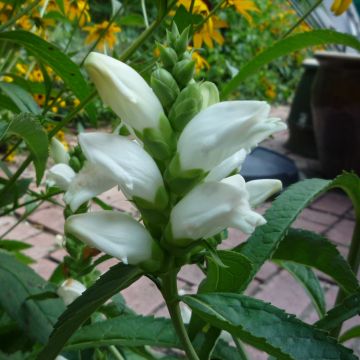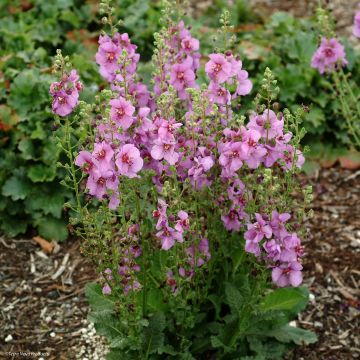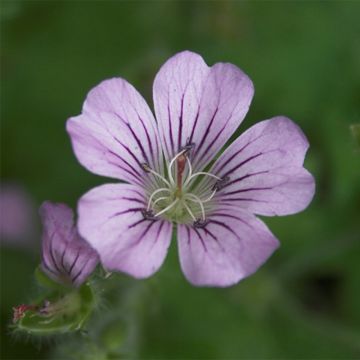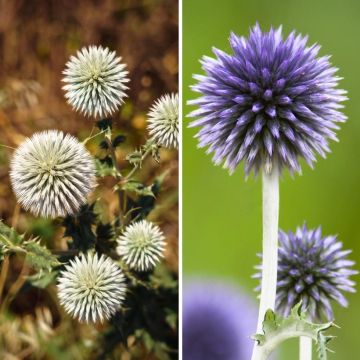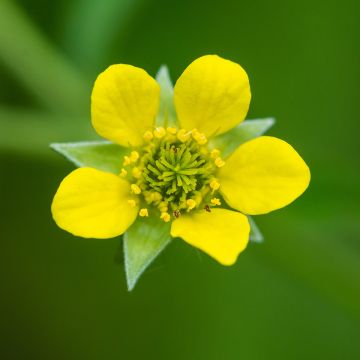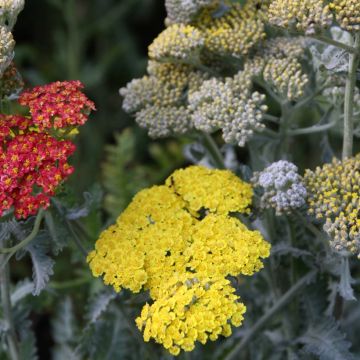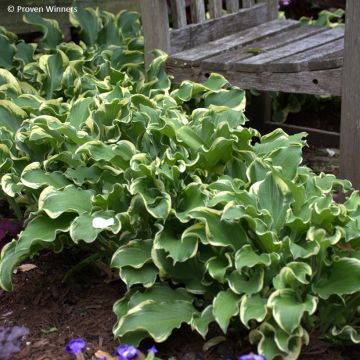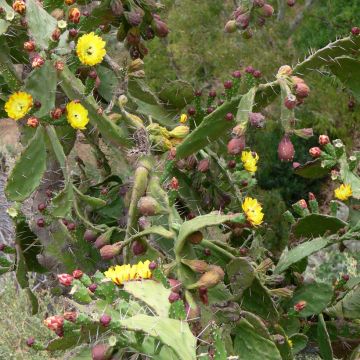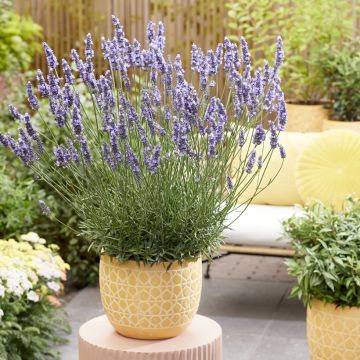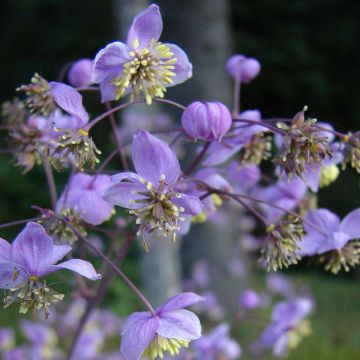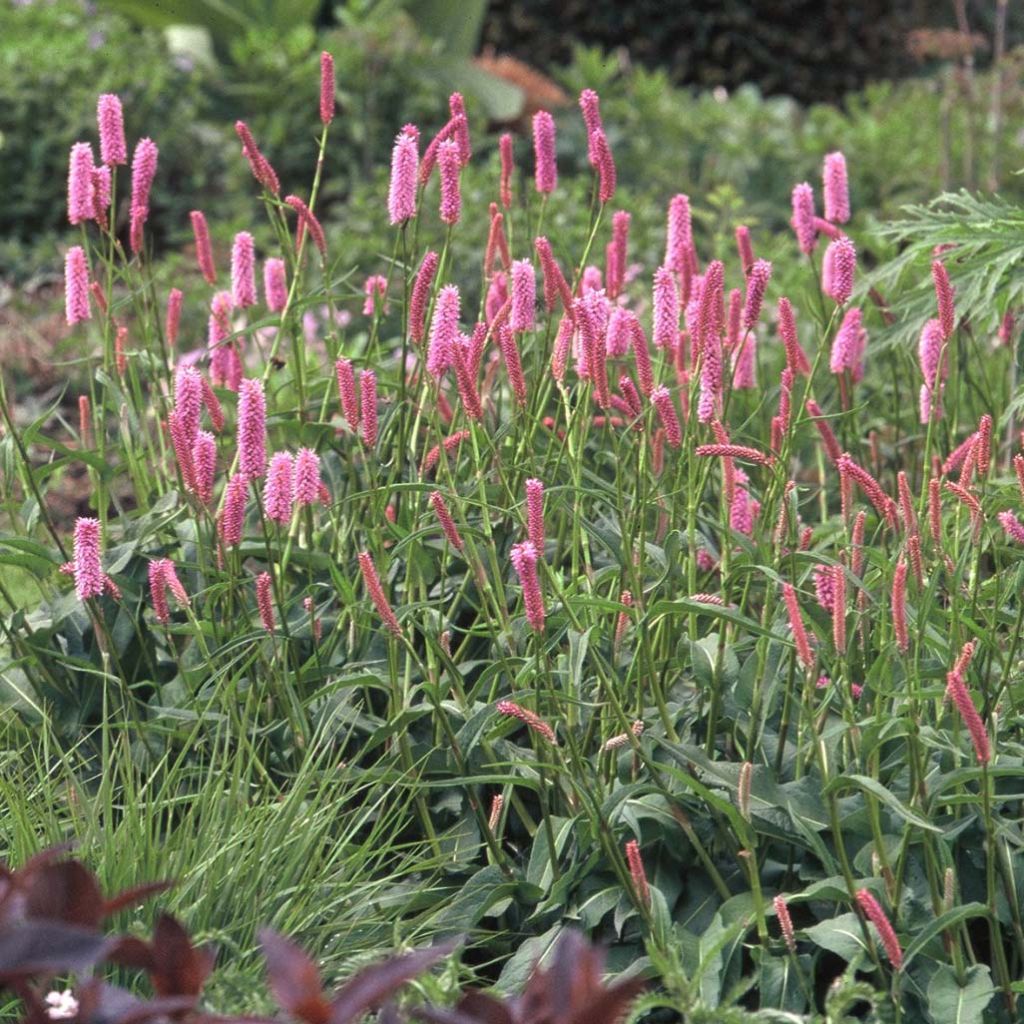

Persicaria bistorta Hohe Tatra - Bistort
Persicaria bistorta Hohe Tatra - Bistort
Persicaria bistorta Hohe Tatra
Bistort, Common Bistort, Snakeroot, Snake Weed, Easter-ledges
All the renouées ordered in a 9 cm (4in) bucket have disappeared and I ordered quite a few... so very disappointed. The one I ordered larger is growing very well.
Christophe, 02/08/2022
This item cannot be shipped to the selected country
Delivery charge from €5.90
More information
Schedule delivery date,
and select date in basket
This plant carries a 12 months recovery warranty
More information
We guarantee the quality of our plants for a full growing cycle, and will replace at our expense any plant that fails to recover under normal climatic and planting conditions.
From €5.90 for pickup delivery and €6.90 for home delivery
Express home delivery from €8.90.
Does this plant fit my garden?
Set up your Plantfit profile →
Description
Persicaria bistorta 'Hohe Tatra', or Bistort Knotweed, is a perennial that loves cool and moist soils and is suitable for water edges. From late spring, its long stems are adorned with cylindrical spikes with a feathery appearance, in a beautiful pink shade leaning towards mauve. They continue to bloom until the end of summer, bringing softness to the garden. Easy and hardy, it can be vigorous and robust.
It is a rhizomatous perennial that thrives in wet and rich soils. It can either have its feet in water or tolerate moist soil in a flower bed. It appreciates sunny locations, but if the heat is intense in your region, choose a semi-shaded spot or mulch the base.
Its luxuriant foliage is a blessing for creating beautiful voluminous ribbons in romantic and natural gardens. The numerous basal leaves form beautiful clusters. Green, ovate, wide, and pointed, they have a lighter central vein that symmetrically divides them. They can sometimes even be heart-shaped and measure between 10 and 20cm (4 and 8in) long. From this verdant base, several long stems emerge, often exceeding 50cm (20in). They end in thick spikes, made up of multiple small flowers with prominent stamens, giving them a slightly feathery appearance. Their charming colour is a lovely pink that leans towards mauve.
Persicaria bistorta 'Hohe Tatra' will offer you a beautiful wild and poetic palette in a few years if planted in groups. It blends well with its cousin, the stem-clasping persicaria, and its perfectly coordinated shades. If conditions are suitable, they will colonise the surroundings together. Ideal for adding volume to banks, this summer plant will also fit into a flower bed that keeps its roots moist. Providing height and movement, thanks to its dancing spikes, it will bring life to more static neighbours.
Report an error about the product description
Persicaria bistorta Hohe Tatra - Bistort in pictures
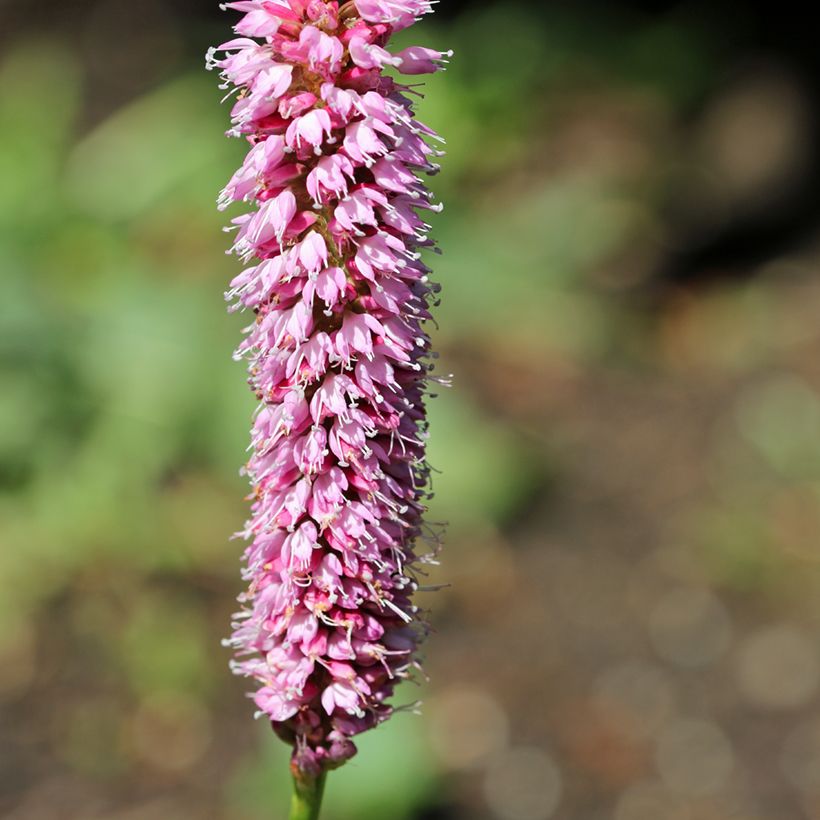

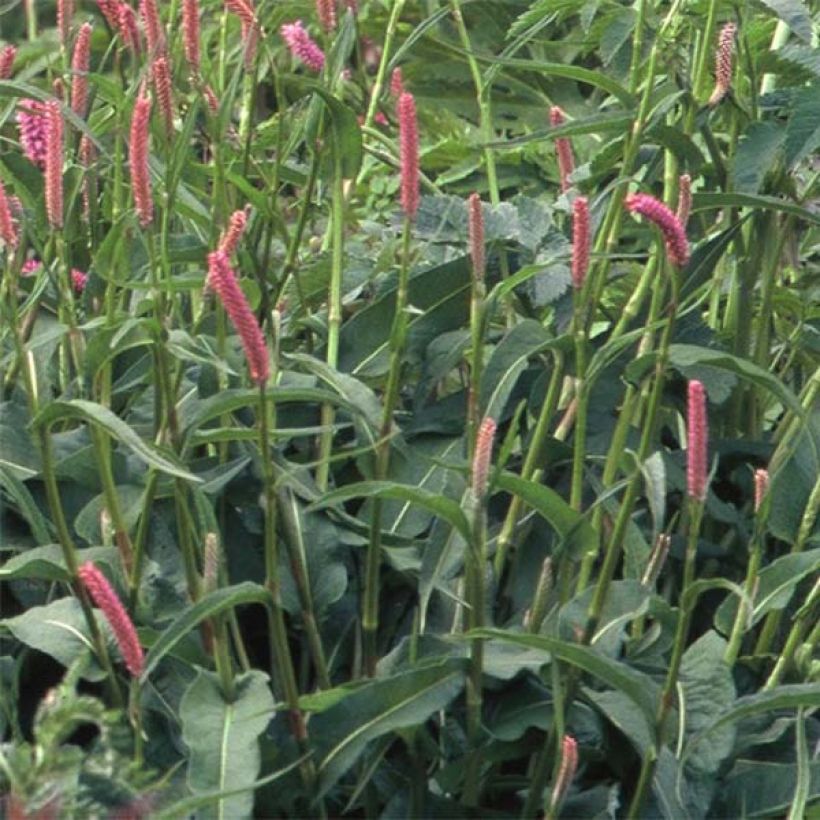

Flowering
Foliage
Plant habit
Botanical data
Persicaria
bistorta
Hohe Tatra
Polygonaceae
Bistort, Common Bistort, Snakeroot, Snake Weed, Easter-ledges
Cultivar or hybrid
Other Persicaria
Planting and care
Persicaria bistorta 'Hohe Tatra' thrives in moist and even very wet soil, even with its feet in the water. Plant this perennial in spring or autumn on the banks of a pond or a marsh. You can place it in any area that retains moisture or in a moist flower bed. It loves full sun, but if the heat becomes too intense, the substrate may dry out. It is preferable to place it in partial shade or mulch the base. It does not mind heavy soils, and appreciates fertile soils. However, in these soils, its growth can be vigorous. It may be necessary to intervene to limit the spread of the roots.
A winter or late winter clean-up helps remove the faded stems.
Planting period
Intended location
Care
-
, onOrder confirmed
Reply from on Promesse de fleurs
Summer flowering perennials
Haven't found what you were looking for?
Hardiness is the lowest winter temperature a plant can endure without suffering serious damage or even dying. However, hardiness is affected by location (a sheltered area, such as a patio), protection (winter cover) and soil type (hardiness is improved by well-drained soil).

Photo Sharing Terms & Conditions
In order to encourage gardeners to interact and share their experiences, Promesse de fleurs offers various media enabling content to be uploaded onto its Site - in particular via the ‘Photo sharing’ module.
The User agrees to refrain from:
- Posting any content that is illegal, prejudicial, insulting, racist, inciteful to hatred, revisionist, contrary to public decency, that infringes on privacy or on the privacy rights of third parties, in particular the publicity rights of persons and goods, intellectual property rights, or the right to privacy.
- Submitting content on behalf of a third party;
- Impersonate the identity of a third party and/or publish any personal information about a third party;
In general, the User undertakes to refrain from any unethical behaviour.
All Content (in particular text, comments, files, images, photos, videos, creative works, etc.), which may be subject to property or intellectual property rights, image or other private rights, shall remain the property of the User, subject to the limited rights granted by the terms of the licence granted by Promesse de fleurs as stated below. Users are at liberty to publish or not to publish such Content on the Site, notably via the ‘Photo Sharing’ facility, and accept that this Content shall be made public and freely accessible, notably on the Internet.
Users further acknowledge, undertake to have ,and guarantee that they hold all necessary rights and permissions to publish such material on the Site, in particular with regard to the legislation in force pertaining to any privacy, property, intellectual property, image, or contractual rights, or rights of any other nature. By publishing such Content on the Site, Users acknowledge accepting full liability as publishers of the Content within the meaning of the law, and grant Promesse de fleurs, free of charge, an inclusive, worldwide licence for the said Content for the entire duration of its publication, including all reproduction, representation, up/downloading, displaying, performing, transmission, and storage rights.
Users also grant permission for their name to be linked to the Content and accept that this link may not always be made available.
By engaging in posting material, Users consent to their Content becoming automatically accessible on the Internet, in particular on other sites and/or blogs and/or web pages of the Promesse de fleurs site, including in particular social pages and the Promesse de fleurs catalogue.
Users may secure the removal of entrusted content free of charge by issuing a simple request via our contact form.
The flowering period indicated on our website applies to countries and regions located in USDA zone 8 (France, the United Kingdom, Ireland, the Netherlands, etc.)
It will vary according to where you live:
- In zones 9 to 10 (Italy, Spain, Greece, etc.), flowering will occur about 2 to 4 weeks earlier.
- In zones 6 to 7 (Germany, Poland, Slovenia, and lower mountainous regions), flowering will be delayed by 2 to 3 weeks.
- In zone 5 (Central Europe, Scandinavia), blooming will be delayed by 3 to 5 weeks.
In temperate climates, pruning of spring-flowering shrubs (forsythia, spireas, etc.) should be done just after flowering.
Pruning of summer-flowering shrubs (Indian Lilac, Perovskia, etc.) can be done in winter or spring.
In cold regions as well as with frost-sensitive plants, avoid pruning too early when severe frosts may still occur.
The planting period indicated on our website applies to countries and regions located in USDA zone 8 (France, United Kingdom, Ireland, Netherlands).
It will vary according to where you live:
- In Mediterranean zones (Marseille, Madrid, Milan, etc.), autumn and winter are the best planting periods.
- In continental zones (Strasbourg, Munich, Vienna, etc.), delay planting by 2 to 3 weeks in spring and bring it forward by 2 to 4 weeks in autumn.
- In mountainous regions (the Alps, Pyrenees, Carpathians, etc.), it is best to plant in late spring (May-June) or late summer (August-September).
The harvesting period indicated on our website applies to countries and regions in USDA zone 8 (France, England, Ireland, the Netherlands).
In colder areas (Scandinavia, Poland, Austria...) fruit and vegetable harvests are likely to be delayed by 3-4 weeks.
In warmer areas (Italy, Spain, Greece, etc.), harvesting will probably take place earlier, depending on weather conditions.
The sowing periods indicated on our website apply to countries and regions within USDA Zone 8 (France, UK, Ireland, Netherlands).
In colder areas (Scandinavia, Poland, Austria...), delay any outdoor sowing by 3-4 weeks, or sow under glass.
In warmer climes (Italy, Spain, Greece, etc.), bring outdoor sowing forward by a few weeks.

































